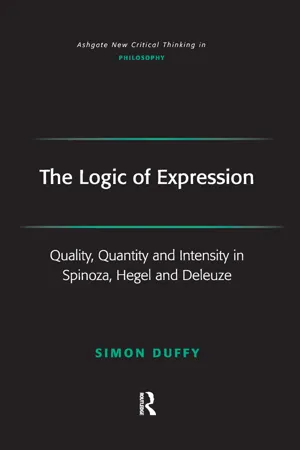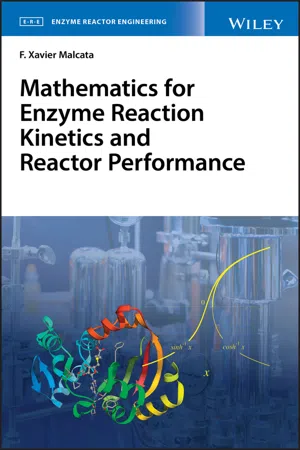Divergence Test
The Divergence Test is a method used to determine the convergence or divergence of an infinite series. It states that if the limit of the terms of the series does not equal zero, then the series diverges. In other words, if the terms of the series do not approach zero, the series does not converge.
3 Key excerpts on "Divergence Test"
- J. Rosebush, Stu Schwartz(Authors)
- 2016(Publication Date)
- Research & Education Association(Publisher)
...Since the smaller series diverges, the larger (original) series diverges. ii. To see if converges, we compare it to a similar (and, in this case, larger) series, This series converges because it is equivalent to a convergent p -series,. Since the larger series converges, the smaller (original) series converges. 5. Limit Comparison Test Suppose and are series with positive terms. If where 0 < c < ∞, then either both series converge or both series diverge. i. To see if converges, compare it to, which is a convergent p -series. Since 0 < 1 < ∞ and the second series converges, then the first series also converges. ii. To see if converges, compare it to, which is a divergent (r > 1) geometric series.. Since 0 < 1 < ∞ and the second series diverges, then the first series also diverges. 6. Alternating Series Test If the alternating series where a k > 0 for all k, satisfies (a) a k > a k+1 and (b), then the series converges. If one of these conditions is not satisfied, the series diverges. That is, if each term is smaller than the previous term (in absolute value), and the terms are approaching zero, then the series converges. This applies only to alternating series. Remainder : | R k | < a k +1 That is, when adding the first n terms of an alternating series, the remainder (or the error) is less than or equal to the first omitted term. converges because, a) for all k, and b). i. Find the number of terms required to approximate the sum of the series with an error of less than 0.001. This is an alternating series whose terms are getting smaller. The first factorial greater than 1,000 is 7!, so. Therefore, it takes 6 terms to calculate with an error of 0.001. 7. Integral Test Let f (x) be a continuous, positive, decreasing function on [1, ∞) which results when k is replaced by x in the formula for a k. Then the series converges if and only if the improper integral converges. Use this test when f (x) is easy to integrate...
- eBook - ePub
The Logic of Expression
Quality, Quantity and Intensity in Spinoza, Hegel and Deleuze
- Simon Duffy(Author)
- 2016(Publication Date)
- Routledge(Publisher)
...The value or sum of an infinite series is only determinable if the series converges. Divergent series have no sum. It was considered that reckoning with divergent series would therefore lead to false results. However, the problem of integration as a process of summation from the differential point of view of the infinitesimal calculus did continue to be explored. It was Augustin Cauchy (1789 – 1857) who first introduced specific tests for the convergence of series, so that divergent series could henceforth be excluded from being used to try to solve problems of integration because of their propensity to lead to false results. 54 This method was later reformulated by Cauchy as the determination of the definite integral, which is distinguished from the indefinite integral only insofar as the definite integral is used to determine the limit of the sum of the area under the curve between two points on the x -axis, whereas the indefinite integral, as the primitive function whose derivative is the given function, determines the whole curve. Both integrals, definite and indefinite, are determinable by the inverse transformation of the differential relation; the definite integral being determined within a limited interval. Whereas Gueroult equates the infinite sum of Spinoza’s example with this definite integral, Deleuze rather appeals to the ‘barbaric or prescientific interpretations of the differential calculus’, 55 as presented by the differential point of view of the infinitesimal calculus, according to which integration is a method of summation in the form of a series. The object of the process of integration in general is to determine from the coefficients of the given function of the differential relation the original function from which they were derived. Put simply, given a relation between two differentials, dy/dx, the problem of integration is how to find a relation between the quantities themselves, y and x...
- F. Xavier Malcata(Author)
- 2020(Publication Date)
- Wiley(Publisher)
...(12.7), and recalling Eq. (9.108). When a series consists of only positive terms (i.e. a i ≥ 0 for all i), then it must either converge or diverge to +∞ ; it clearly cannot oscillate, as might happen when both positive and negative terms are present. Several tests for convergence have accordingly been developed; the most noteworthy examples include comparison and ratio comparison tests, d’Alembert’s ratio test, and Cauchy’s integral test for monotonic series, complemented with Leibnitz’s test for alternating series – all of which will be reviewed next. 12.1.1 Comparison Test If and denote series of positive terms, and the latter is known to converge to some finite limit S b, then (12.9) – so convergence of toward some finite limit S a is guaranteed at the expense of convergence of, as long as the generic term of the former, a i, never exceeds that of the latter, b i. To prove the above comparison test, one should depart from the very hypothesis (12.10) and then proceed to ordered addition of Eq. (12.10) for i = 1, 2, …, n – according to (12.11) a corollary of Eq. (9.121) guarantees that (12.12) based on Eq. (12.11), together with the hypothesis that converges to (finite) S b – so is upper bounded by S b. On the other hand, the first inequality in Eq. (12.10) implies that cannot decrease when n increases, so (12.13) is the only compatible situation, thus retrieving Eq. (12.9) ; whereas combination of Eqs. (12.12) and (12.13) further supports (12.14) – which indicates that not only converges, but also the limit at stake does not exceed S b, so it must be finite as stated in Eq. (12.9). 12.1.2 Ratio Test Consider again two series of positive terms, and, such that the latter converges to finite S b – besides (12.15) applying to every i ; it can be proven that (12.16) known as ratio test. In attempts to derive the above theorem, one may first rewrite a i and b i as product of consecutive ratios, according to (12.17) and (12.18) respectively; in view of Eq...


